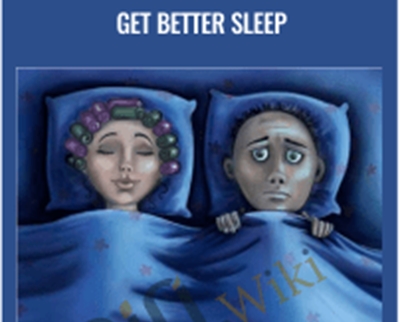Relief from Insomnia-Practical Strategies to Help Your Clients Get Better Sleep – Rubin Naiman
Relief from Insomnia-Practical Strategies to Help Your Clients Get Better Sleep – Rubin Naiman Download. What’s worse, many practitioners aren’t well train…

Original price was: $97.00.$15.00Current price is: $15.00.
Contents
Salepage link: At HERE. Archive: http://archive.is/XzNJE
Sleep Problems Can Make Almost Any Other Condition Worse
Here’s How You Can Help Your Clients Get Better Sleep
Whether it’s trouble falling asleep, staying asleep, or waking too early, sleep issues can be costly for our patients.
Not only that, sleep problems can eat away at our clients’ relationships, their work life, and their ability to cope with challenges.
Trouble sleeping can make almost every other condition worse.
Problems sleeping can lead to:
- Depression
- Memory loss
- Anxiety
- Agitation
- ADHD
- Obesity
Sleep disorders have also been associated with cardiovascular disease, diabetes, arthritis, and obesity.
What’s worse, many practitioners aren’t well trained to identify and treat these crucial problems. Sleep disorders such as narcolepsy often get misdiagnosed as depression
Many common approaches to sleep disorders can actually make them worse.
But there are effective ways to work with sleeping problems.
That’s why we’ve teamed up with sleep expert Rubin Naiman, PhD to bring you a short, focused course.
In this program, you’ll get practical, concrete strategies to evaluate insomnia and help your clients finally get a good night’s rest.
You’ll Get a New Way to Help Your Clients Finally Get the Sleep They Need:
Video 1 – What Most Practitioners Overlook in Their Approach to Sleep
- 2 ways most practitioners misunderstand sleep
- 3 types of consumption that can impact sleep
- Why understanding hyperarousal is critical for working with insomnia
- The problem with the question “how much sleep should I get?”
Video 2 – Why We Need to Shift the Way We Understand Sleep
- 3 kinds of rhythm that are critical to sleep
- What happens in the body during deep sleep
- How body temperature and melatonin contribute to healthy sleep
- The serious side effects of nighttime light exposure
- Why the World Health Organization has designated shift work as a probable carcinogen
Video 3 – How to Evaluate Insomnia
- How to assess excessive daytime sleepiness (EDS)
- How the “nightstand test” can help you evaluate insomnia
- The “Three P Model” for understanding the causes of insomnia
- The most critical cause of sleep disorders that goes unrecognized
- Why our clients’ strategies for managing insomnia often make it worse
- 3 types of noise that can hurt our patient’s sleep
- How sleeping pills might be making your patient’s insomnia worse
Video 4 – How to Manage “Body Noise” and “Bed Noise” to Help Your Patients Get Better Sleep
- Why recommending sleep tips usually doesn’t work
- How most health professionals are misinformed about melatonin
- What really wakes people up in the middle of the night
- Rest practices that can calm the body and mind to help your patients sleep
- The 5 elements of an optimal sleep environment
- How to use the “one bob” rule to avoid conditioned insomnia
Video 5 – How to Manage “Mind Noise” – the Most Overlooked Strategies for Treating Insomnia
- Why the way most people try to get to sleep keeps them awake
- A common attitude about insomnia that makes sleeping problems worse
- How your patient’s stay -awake strategies during the day can make their sleep at night more challenging
- Why the usual definition of a “good sleeper” misses the mark
- How to help your patients “have their nightmares before bed”
“We have data suggesting that people who sleep on average less than five and in some cases less than six hours a night, are at dramatic increased risk for both physical illness and psychological disorders.” – Rubin Naiman, PhD
Sleep loss is linked to:
- Heightened infections
- Obesity
- Diabetes
- Coronary vascular disease Cancer
- Arthritis
- ADD
- Anxiety
- Depression
- Agitation
- Memory loss
- Judgment problems
Why the transcript is essential:
- The transcript makes it easy to go back and double check concepts, citations and names that are mentioned
- We put in a table of contents to make it easy for you to find the exact part of the webinar you need
- Having the concepts already written allows you to take notes on how you’re going to use the ideas rather than transcribing the ideas
- Some people simply learn better by reading than by listening or watching
- You will be able to print out and share techniques presented in the session with your patients
Review by NLP
Review by NLP
Reviews (0)
User Reviews
Only logged in customers who have purchased this product may leave a review.









There are no reviews yet.